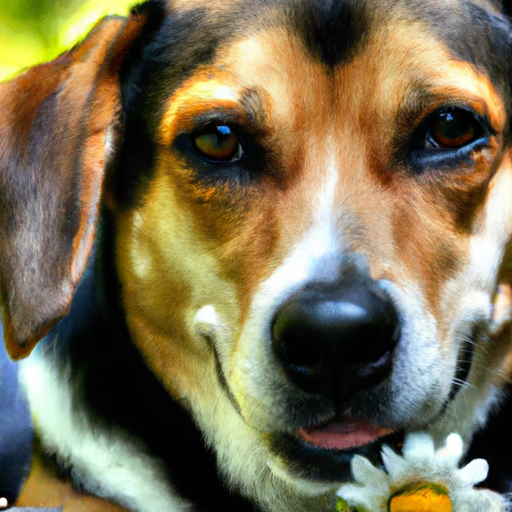When Do Dogs Stop Growing?
It’s always quite intriguing to see your tiny ball of fur grow into a full-grown dog. With the “When Do Dogs Stop Growing” article, you’ll get to understand the science behind a dog’s growth period. The article talks about the various factors that influence your dog’s growth such as breed, nutrition, and genetics, to name a few. You’ll learn about the different stages in a dog’s lifecycle and understand exactly when growth slows down and finally stops. So, strap in, and get ready for a comprehensive insight into the mysterious world of canine development.
Understanding Dog Growth Patterns
Understanding the growth patterns of dogs can feel a bit like trying to learn a new language. But don’t worry! By the end of this piece, you’ll have a good grasp on the subject.
Defining a dog’s growth
A dog’s growth refers to its process of maturing from a newborn pup into an adult dog. This entails physical changes, such as weight gain and increase in size, and also includes development in terms of behavior and learning abilities.
Determining factors of dog growth
There are several determining factors of dog growth. Breed is the most significant one as different breeds grow at different rates and reach different sizes. Nutrition, genetics, and overall health also play a crucial part in determining how and when a dog grows.
Possible differences across dog breeds
The differences across breeds can be starkly noticeable when it comes to growth. For instance, a Chihuahua may reach its adult size by the time it’s ten months old, while a Great Dane may not stop growing until it’s two years old!
Small Breed Dogs and Growth
Now, let’s dial in a bit closer and look at how growth varies among small, medium, and large breeds.
Characteristics of small breed dogs’ growth
Small breed dogs usually grow faster than bigger dogs and reach their full size by the time they are ten to twelve months old. They also tend to live longer than larger dogs.
The growth timeline of small breed dogs
While the specific growth timeline can vary, most small breed dogs are close to their full size by six to eight months of age, and completely done growing by ten to twelve months.
Recognizing when a small breed dog is fully grown
An easy way to recognize when your small breed dog has stopped growing is by monitoring its size and weight, and keeping an eye on the development of its teeth and sexual maturity, which we’ll discuss in detail later.
Medium Breed Dogs and Growth
What about medium breed dogs? Let’s take a look.
Characteristics of medium breed dogs’ growth
Medium breed dogs, as a general rule, finish growing somewhere between 12 to 16 months of age. Like small breed dogs, they start by gaining a lot of weight fast, then their growth slows down as they near their adult size.
The growth timeline of medium breed dogs
On average, a medium-sized dog breed will reach its full height by one year of age but may continue to fill out with muscle until about 18 months.
Recognizing when a medium breed dog has stopped growing
Recognising when a medium breed dog has stopped growing involves watching for similar signs to those in small breed dogs – physical maturity, teeth development, and sexual maturity.
Large Breed Dogs and Growth
Lastly, let’s focus on large breed dogs and their growth characteristics.
Characteristics of large breed dogs’ growth
Large breed dogs take the longest to reach their full size. They often continue to grow until they are one and a half to two years old.
The growth timeline of large breed dogs
Most large breed dogs hit their full height by around one year of age, but continue to gain weight and muscle until they are around two years old.
Identifying when a large breed dog has reached its full size
Identifying when a large breed dog is fully grown involves the same signs as with small and medium breed dogs: physical size and maturity, teeth development, and sexual maturity.
Puppy Growth Stages
Let’s go into the different stages of puppy growth now, shall we?
Newborn Stage
In the newborn stage, puppies are entirely dependent on their mothers and will primarily sleep and feed.
Junior Stage
In the junior stage, which could be between 3 to 6 months, their rate of growth slows down but they start to learn many important behaviors and their personalities begin to shine through.
Adolescence Stage
During the adolescence stage, which might occur between 6 to 18 months depending on the breed, dogs become sexually mature and may start to challenge their owners more.
Adult Stage
Once a dog reaches the adult stage they will have achieved their full size and their personality will be fully formed.
Physical Indicators a Dog has Stopped Growing
How can you tell if your pupper has done growing? There are a few ways.
Dog’s Size and Weight
Obviously, the most direct indicator of growth is your dog’s size and weight. Once it has not significantly increased for a certain period, this usually indicates that growth has stopped.
Teeth Development
The development of your dog’s teeth can also provide a clue. Dogs usually have a full set of adult teeth by the time they are seven months old – so if your dog has fully developed adult teeth, there’s a good chance it’s done growing.
Sexual Maturity
Sexual maturity is another pretty obvious sign that your dog has reached adulthood. This usually happens between six and twelve months in small breeds, and around two years in large breeds.
Consulting a Vet for Accurate Growth Information
Now let’s talk about arguably the most critical piece of the puzzle: your vet!
Importance of Regular Check-ups
Regular check-ups are crucial when assessing your dog’s growth. Your vet can weigh your dog, examine it for any health issues, and provide accurate information based on these assessments.
Role of Vets in Assessing Dog Growth
The role of vets in assessing dog growth is crucial, they have the professional training and experience to accurately assess whether your dog is growing at a suitable rate for their age and breed.
Circumstances Necessitating a Vet’s Intervention in Dog Growth
Certain circumstances might need a vet’s intervention in dog growth, such as your dog growing too fast or too slow, experiencing pain during growth, or showing signs of potential growth disorders.
Impact of Nutrition on Dog Growth
Oh yes, nutrition plays a big part in your canine companion’s growth!
Essential Nutrients for Dog Growth
Specific essential nutrients are needed for healthy dog growth, such as proteins, carbohydrates, fats, vitamins, and minerals. These all play different roles in promoting proper growth and development.
Effect of Overfeeding
Just like in humans, overfeeding can cause obesity and numerous health problems. It can also cause large breed puppies to grow too quickly, leading to joint and bone problems.
Effect of Underfeeding
On the other hand, underfeeding can delay your dog’s growth and lead to malnutrition, affecting overall health and longevity.
Genetics and Its Role in Dog Growth
Let’s not forget the role of genetics in dog growth.
Understanding Canine Genetics
Canine genetics dictate your dog’s breed, size, coat color, and virtually every other aspect of its physical appearance – including growth!
Influence of Breed Genetics on Growth
Each breed has its own genetic predisposition to grow to a certain size, and follow a certain growth pattern.
Exceptions to Genetic Predisposition
However, there are always exceptions to this rule. Dogs might grow too big or too small compared to their expected size due to various environmental factors and health conditions.
Potential Growth Disorders in Dogs
Unfortunately, like humans, dogs can also have growth disorders.
Identifying Growth Disorders
Identifying growth disorders can be tricky without professional help, as they may present as just an overtly fast or slow growth rate, or abnormal size and weight for the age and breed of the dog.
Common Growth Disorders in Dogs
Some common growth disorders in dogs include Hip or Elbow Dysplasia where the dog experiences abnormal growth in the hip or elbow joint, and Panosteitis, a painful condition that often affects large breed dogs.
Treatment and Management of Growth Disorders
The treatment and management of growth disorders depend on the specific disorder, and often involve a combination of medicinal treatments, surgery, physical therapy, and lifestyle adjustments.
And there you have it! A deep-dive into understanding dog growth patterns, stages, and elements influencing them. Make sure to consult with your vet regularly, and give your pup a balanced diet and plenty of love!






